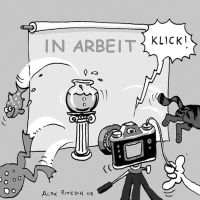Ural Field Mouse (Apodemus uralensis)
| Ural Field Mouse Apodemus uralensis | |
|---|---|
| Name | Ural Field Mouse |
| Name Lat. | Apodemus uralensis |
| Family | Murids |
| Family lat. | Muridae |
| Order | Rodents |
| Order lat. | Rodentia |
| Origin | Eurasia |
| Climate | Temperate |
| Habitat | Forest edges |
| Diet | Seeds, green fodder, insects |
| Behavior | Nocturnal; ♂ territorial |
| Keeping | Pair, group |
| Care Level | Moderate |
| Life Span | 1-2 years |
| Protection | No |
| Metric Units | |
| Size | 8-11 cm |
| Temperature | Room temperature |
| Housing | A: 0.3 m² / H: 40 cm |
| US Units | |
| Size | 3.1"-4.3" |
| Temperature | Room temperature |
| Housing | 3 ft² / 15" hight |
Distribution and habitat
The distribution range of the crepuscular and nocturnal dwarf wood mouse extends over large parts of Central and Eastern Europe and Central Asia at altitudes up to 1300 meters, with the exception of the northern areas of Scandinavian countries. They inhabit forest edges but also open landscapes and fields adjacent to forests. Wood mice build a burrow with tunnels and nest chambers.
Maintenance
Minimum dimensions for the enclosure:
| 1-2 animals | area: 0.3 m² | height: 40 cm |
| Each additional animal | Area: + 20 |
A terrarium placed in a bright (no direct sunlight), draught-free and quiet place is recommended, with ventilation openings at the sides, and it must not be tightly closed at the top.
The cage must be equipped with climbing and hiding places (platforms, tubes, caves, etc.) and sleeping houses with nest-building material (hay, etc.), as well as a food and drinking container (drinking bottle). Suitable substrate is, for example, small animal litter or a peat and sand mixture covered with some bark mulch or dry leaves. The bedding depth should be at least 10 cm, but preferably more. Nail material, such as rodent stone or unsprayed twigs from fruit trees, willows, maples, etc. to wear down the teeth must be available at all times. A natural day-night rhythm must be ensured.
Diet
Their diet is mainly vegetarian, but they also require animal protein. Accordingly, the species-specific diet consists of a low-fat grain mixture, available from specialist retailers as "mouse food mixture" in premium quality, plus some animal protein (e.g. curd cheese, hard-boiled egg, mild sliced cheese, insects) and fresh food such as wild herbs, lettuce (chicory), carrots and fruit, as well as a mineral stone. Drinking water must always be available in hanging bottles or in stable, open containers. Water and food containers shall be arranged so that they cannot become soiled. Water and feed shall be offered fresh daily.
A regular and varied diet promotes health and prevents deficiency symptoms.
Behaviour and compatibility
They are very social creatures and may only be kept in pairs or in a group, such as one (neutered) buck with several females or in female-only groups. Fierce territorial fights may occur between unneutered males. At the first sign of incompatibility, separate the animals immediately
Reproduction and breeding
In the male, the anal and genital openings are farther apart than in the female.
The gestation period is 22-24 days. A litter usually consists of 2-9 young, which are born naked, blind and deaf. After about 2 weeks the eyes open. The young are suckled for 18 days and can be weaned from the mother after about 21 days. They are sexually mature as early as 8 weeks of age and ready to breed from the 10th week. The breeding season in the wild is from March to October, during which they can have up to 3 litters.
Their average life expectancy is about 2 years.
Important
They are also diurnal, but keep resting (polyphasic), but not hibernating
Impellers must be injury-proof, have a closed running surface and back wall, with a diameter that the animals can run without a crooked back.
As escape animals they need sufficient retreat and hiding places, so the enclosure should also be somewhat elevated and not placed on the floor. They must not be grabbed or pulled by the tail, as the skin can easily tear and detach
Further literature can be found in your pet store
References
Text: petdata; Image: Alex Rinesch
Source: BMEL (2014): Gutachten über Mindestanforderungen an die Haltung von Säugetieren; TEUBLER (2006): Meine Farbmaus zu Hause, bede Verlag; W. PUSCHMANN, D. ZSCHEILE, K. ZSCHEILE (2009): Zootierhaltung - Tiere in menschlicher Obhut: Säugetiere, Harri Deutsch Verlag
- Gemäß § 21 Abs. 5 Tierschutzgesetz idgF
